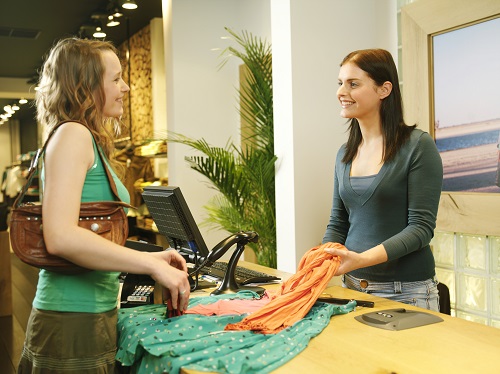
The world is shifting, changing, and digitalizing at a faster pace than ever before. That’s why we want to accompany you during this challenging journey with the best tools, products, and information available.
Retailers relying on retail analytics and big data enable them to make smarter decisions towards higher profits, better customer satisfaction, and lower operating costs.
We know being data-centric is crucial for retailers. That’s why we’ve compiled a few retail tips to help you control the six levers of retail to convert data into profitability, loyalty, and growth. Read about them below, then see if you can put them into action in your retail operations:
1. Merchandising
The biggest opportunity to leverage Retail analytics in merchandising is centered around intelligent pricing, promotions, allocation, replenishment, and markdowns integrated with a highly accurate, centralized data-driven demand forecasting engine.
ChainDrive Retail Analytics’ built-in business intelligence provides you with integrated reports and tools to make informed decisions based on transaction or loyalty data. It provides real-time data access because the information can be collected automatically, and all data is stored in the same place. This secure centralized database enables flexibility and efficiency that manual systems cannot obtain.
2. Customer Service
Retailers can better reach their target customers through segmentation. This way, they see which products and services are appropriate with which consumer segment. Retailers can use data that matches users with features and ads. Combining data from various applications creates behavioral patterns and makes suitable suggestions. Retail analytics provides greater insight into upsell opportunities and identification of losses. Retailers can proactively predict and prevent potential issues that may arise, resulting in fewer customer service problems and increased brand loyalty.
3. Marketing
Retail analytics with in-built business intelligence software can use shopper journey and loyalty segmentation for optimization and personalization. With customer-centric retail data, in-store and online data can be combined to define customer segments, optimize omnichannel retail marketing efforts, and create hyper-personalized customer experiences. With these capabilities, retailers can often see more profitable, high customer satisfaction, and greater shopper loyalty. Retailers can pull various data points across channels into one centralized location and compile them into actionable insights.
ChainDrive’s retail management software package includes a comprehensive Omnichannel Retail Analytics component that will give you all the information you need to succeed.
4. Store operations
By analyzing and comparing data among store branches, retailers can improve store performance and customer satisfaction. Retailers use historical and real-time data to optimize in-store decisions, monitor customer buying behaviors, identify inefficiencies, anticipate future demand, optimize stock and drive marketing activity.
The aggregation of data from the performance of physical stores, combined with the habits of online shoppers, can allow retailers to offer new services in stores. For example, modern retailers have developed a click & collect service in their stores.
With ChainDrive retail analytics, you can get a birds-eye view of store performance, informed sales and marketing decisions, and increased profit.
5. Supply chain
A dynamic, flexible, and fast supply chain has become table stakes across the retail industries. ChainDrive’s predictive analysis helps retailers optimize their inventory to meet demand and minimize waste. Retailers need to invest in retail analytics software to manage key operational areas like replenishment, transportation management, process optimization, inventory planning, labor planning, and distributed order management.
ChainDrive retail analytics software helps retailers pinpoint improvement opportunities across the entire supply chain, from sourcing and purchasing to in-store availability management.
6. Workforce Management
Retailers can use analytics to increase workforce productivity and analyze the price, customer shopping patterns, locations, and employee capabilities and performance. By looking at existing data, retailers can manage a significant portion of their budget more strategically, increase productivity and scheduling, improve recruitment, retention, and development activities.
BI-powered labor optimization can be a boon to store operations. With labor shortage and increasing costs, retailers can use Retail analytics data to align labor spend and labor productivity insights with customer demand for staffing or e-commerce fulfillment.
ChainDrive offers the most comprehensive Retail analytics platform that enables retailers to make intelligent decisions and empowers them with real-time data and actionable insights to make timely decisions.
ChainDrive’s predictive and prescriptive analytics can measure results, clarify why they are occurring, and recommend actions that will drive improvements. We help retailers unleash advanced analytics on rich data to turn customer insights into retail excellence.
Request a free online demo and see how collecting, integrating, analyzing, and presenting your data with ChainDrive can help you take your retail business to the next level.




